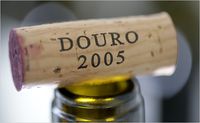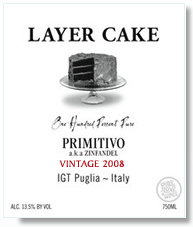Unless, or course, it’s really delicious cheap wine.
 According to yesterday's Wall Street Journal article entitled “Snooty? Not Today’s Wine Drinkers,” many Americans are doing just that…..opting for attractive, well-made wines in the $9-12 range, instead of the pricier quaffs they may have been drinking before the 2008 economic downturn. Reporter David Kesmodel writes:
According to yesterday's Wall Street Journal article entitled “Snooty? Not Today’s Wine Drinkers,” many Americans are doing just that…..opting for attractive, well-made wines in the $9-12 range, instead of the pricier quaffs they may have been drinking before the 2008 economic downturn. Reporter David Kesmodel writes:
"The economic downturn was toughest for the U.S. wineries that sell wines for $20 a bottle and up. After switching to less-expensive wines in the downturn, many consumers are staying at those lower prices because they liked what they found, industry executives and analysts say."
More than a year ago, New York Times wine writer Eric Asimov also explored this phenomenon and predicted that Americans would come to love the less expensive options they were discovering in the wake of the economic upheaval:
"In the year or so since the economy plummeted without a parachute, Americans have not stopped buying wine. They’ve simply bought cheaper wine. Whether this will ultimately be seen as a time of sacrifice or an eye-opening education remains to be determined, but I have a hunch that many people will find it easy, when the economy recovers, not to resume their free-spending ways."
Wine prices started dropping even before the current economic crisis, in large part due to the “juice” glut in California. In 2003, I wrote about the impact of that glut on the proliferation of under-$10 and even under-$5 wines, and over the years I've developed a roster of favorite "value" wines. Since the WSJ article focuses on the $9-$12 range, I’ll do the same. Here are three delicious ways to drink to brighter days on the economic horizon.
ANGELINE CALIFORNIA PINOT NOIR is made of grapes from Santa Barbara, Sonoma and Mendocino counties. Its intense aroma features fruit, vanilla and spice; its flavor screams “party” with layers of strawberry, cherry, raspberry and plum. No need to overanalyze this baby, just drink it with gusto. I like it with pizza, braised and grilled chicken, pasta dishes and mild fish such as halibut or Chilean seabass. It’s widely available; I buy it for about $12 at Costco.
 This varietal from Puglia (Italys’ stiletto heel) is, essentially, Zinfandel. And a truly delicious Zinfandel, with only 13.5 percent alcohol instead of the numbing 15 percent and higher of most California Zins. I initially shied away from the wine because of its rather silly name and label. But on a recent family vacation, I ended up serving it with dinner three nights out of seven because it was so compatible with a wide array of dishes – Israeli couscous with yellow raisins, spinach and lamb sausage; pasta Bolognese; Thai peanut butter chicken and coconut milk rice.
This varietal from Puglia (Italys’ stiletto heel) is, essentially, Zinfandel. And a truly delicious Zinfandel, with only 13.5 percent alcohol instead of the numbing 15 percent and higher of most California Zins. I initially shied away from the wine because of its rather silly name and label. But on a recent family vacation, I ended up serving it with dinner three nights out of seven because it was so compatible with a wide array of dishes – Israeli couscous with yellow raisins, spinach and lamb sausage; pasta Bolognese; Thai peanut butter chicken and coconut milk rice.
The winery’s Website has this to say about the Primitivo: A balance of elegance and power; inky black fruit, spice and white pepper, jammy black cherries, plums, blackberry fruit, truffles, tar, and espresso. Warm and rich in the mouth with a creamy texture; the ripe fruit is well supported by the deep structure of the wine.
All is can say is “another glass, please.”
In the name of “research,” I am diligently working my way through the Douro wines of Portugal. If you know what Douro wines are, bravo to you! I am just now discovering this fresh, fruity wine with the slightly spicy nose, pleasantly low alcohol point (13.5%), and gentle pricetag. (There are also very elegant, refined, high-priced Douro wines.)
There are many producers of this engaging blend of grapes from the Douro Valley. I especially like the QUINTA DO CRASTO DOURO that sells at Costco for about 11 or 12 bucks. It offers ripe, appealing fruit, plenty of spice, and an alluring berry aroma. It’s a wine to drink with food, not alone. And it’s happy with a lot of different foods, from burgers and ragus to pork roasts and tomato-based pastas.

Comments